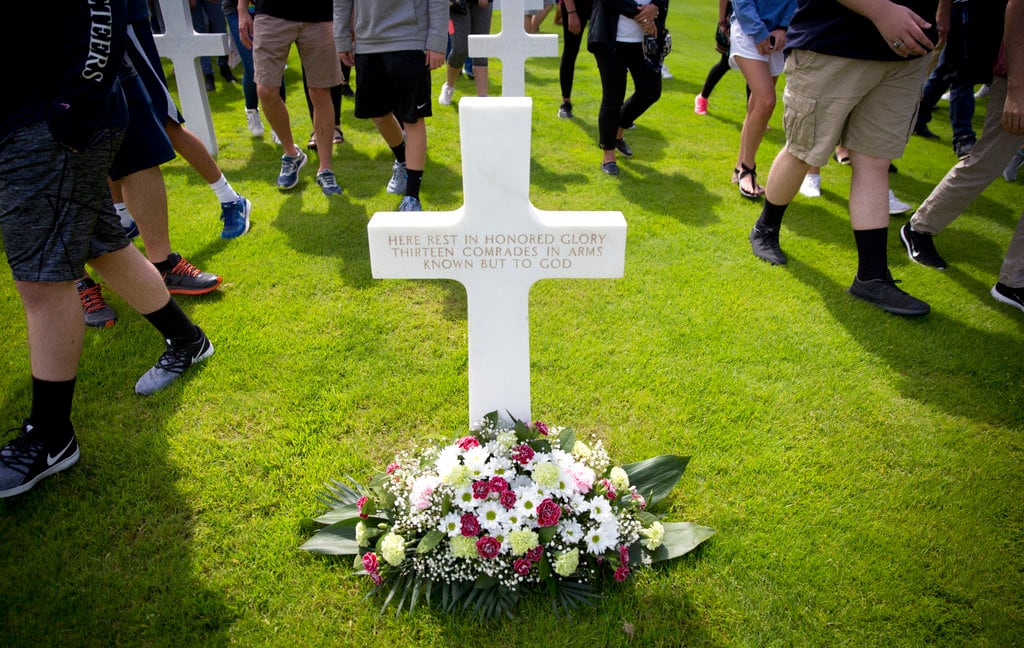Commissary officials are digging for more details on how much customers are saving on their groceries, compared to local stores.
"We hear from our military families that they sometimes find lower prices on selected items outside the gate," said Joseph H. Jeu, director and CEO of the Defense Commissary Agency, in a Defense Department statement.
"For the first time through this new approach, we will compare our prices with local grocers on a more frequent basis to better inform our customers of potential cost savings over stores in their nearby community."
Officials are moving away from using a global method of comparing savings across the board, in a price comparison conducted yearly. The comparisons will focus on stores outside the gate of each commissary and will be conducted more frequently. That likely will be quarterly, according to a statement of work issued by the commissary agency earlier this year, seeking a company to conduct the labor-intensive manual price comparisons between commissaries and local stores.
Information was not immediately available from defense officials about whether individual commissaries will inform their customers about the price differences, and although officials have been exploring a new savings calculation method for months, little detail was available about the new process.
"We've been saying all along they need to have a better understanding of the savings level before they implement changes [in the commissary pricing structure]," said Eileen Huck, deputy director of government relations for the National Military Family Association. "If this new methodology does that, it's good, but right now there's not enough information about it."
The new process for calculating savings will not in itself impact the prices, Jeu said. "Our approach to calculating savings will not impact the prices our customers pay or the dollar benefit that they receive," he stated. "There will be no change to their out-of-pocket expense."
However, this new approach is a first step in implementing sweeping changes that will affect commissary prices.
That includes a system called "variable pricing," in which officials will mark up or mark down grocery items in order to offset part of the commissary system's operating costs. Currently, the commissary agency receives $1.4 billion per year for operating costs — enabling stores to sell groceries at cost from the manufacturer or distributor, plus a 5 percent surcharge at the cash register. That surcharge is used mostly to pay for renovations and construction of commissaries.
The timeline for starting a pilot program to test the idea of variable pricing is not clear, but officials have said the earliest would be November.
Details about the new savings calculation were scant at press time. Information was not immediately available from defense officials about whether the new methodology has been started, or how customers at individual stores will be informed about the savings. It’s not known whether customers will be informed about savings in individual stores or on individual items, compared to stores outside the gate.
In the commissary agency’s FAQs about its "transformation," officials state that "today, savings can be very inconsistent across the store, with some categories at very high savings to market, and others cheaper outside the gate. Variable pricing will help us fix some of these inconsistencies."
Generally, meats, produce and other items around the perimeter of the commissary are priced lower than at other grocery stores, so there is some concern that customers might be paying more for fresh items.
It’s also not clear whether DeCA will use the regional pricing information to raise or lower prices of particular prices in some regions. Currently, commissary customers pay the same for grocery items regardless of where the store is located.
The average savings across the country based on the commissary agency's current savings calculation methods is about 30 percent.
Karen has covered military families, quality of life and consumer issues for Military Times for more than 30 years, and is co-author of a chapter on media coverage of military families in the book "A Battle Plan for Supporting Military Families." She previously worked for newspapers in Guam, Norfolk, Jacksonville, Fla., and Athens, Ga.





